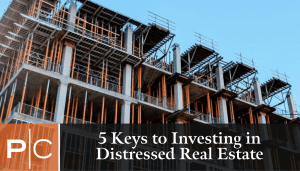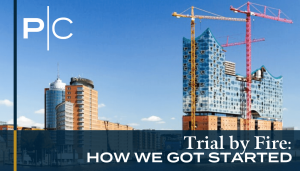Investing in Assisted Living Facilities
By Percy Nikora, Owner & Co-Founder of Penn Capital
As the world’s population continues to age, the demand for assisted living facilities is growing at an unprecedented rate.
With this demographic shift, investors are presented with a unique and lucrative opportunity to enter a market that combines long-term growth potential with resilience in times of economic uncertainty.
At Penn Capital, we strive to uncover up-and-coming real estate markets and asset classes, and the growing demand for assisted living should not be ignored.
Here’s why we have our eye on assisted living right now…
High Demand Fueled by a Rapidly Growing Aging Population
One of the most compelling reasons to invest in senior living facilities is the rapidly expanding aging population.
According to the Organization for Economic Co-Operation and Development, the population of those aged 80+ is expected to grow 55% by 2030. At that time, all Baby Boomers will be over the age of 65, with many facing the need for long-term care and assistance.
Many seniors require some level of care, whether it’s independent living, assisted living, memory care, or facilities with added amenities and support. With an increasing number of seniors living longer, coupled with evolving family dynamics (such as fewer children per family or people living farther away from their aging relatives), more elderly individuals are seeking alternative living arrangements that offer healthcare, socialization, and a high quality of life.
For investors, this rapidly growing pool of senior citizens means a sustained, long-term demand for senior living facilities. The aging baby boomer generation is creating a robust market that will continue to expand for decades, making it an attractive investment option with huge growth potential.
Cycle Lows for New Construction Starts
New construction starts for assisted living facilities are currently at a cyclical low.
Despite the increasing demand, the pace of new developments has slowed significantly in recent years. This can be attributed to several factors, including rising construction costs, zoning and regulatory challenges, and the complexities of financing such specialized real estate projects.
Many facilities closed after the pandemic but the demand kept increasing.
Additionally, because senior living facilities are complex real estate assets that require specific knowledge and expertise to develop and operate, the barriers to entry are higher than for other types of real estate investments. This means that fewer competitors will be able to break into the market, further solidifying the position of early investors and allowing them to benefit from long-term capital appreciation.
Sign up to receive our educational newsletter and to gain exclusive access to our next investment opportunity.
Growing Demand + Supply Deceleration = Opportunity for Investors
This growing supply and demand imbalance represents a significant investment opportunity while doing good by providing a valuable service to an aging population and their families.
Many existing senior living facilities are either outdated or not adequately equipped to meet the diverse needs of today’s seniors. Meanwhile, as mentioned earlier, the construction of new senior living communities has struggled to meet the rising demand.
In fact, the gap between the growing number of aging individuals and the available high-quality senior living options is widening. This shortage of appropriate housing has led to higher occupancy rates at existing facilities, which, in turn, drives up rents and boosts revenue potential for investors.
As the gap between supply and demand increases, those who invest early in this sector can position themselves to benefit from higher rental income and greater capital appreciation over time, along with tax benefits. It’s a classic case of demand outstripping supply, which leads to a steady market for investors.
Premium Rents & Additional Income Streams
Assisted living facilities benefit from premium rents, as well as service fees for medical care, meals, and amenities.
Assisted living, memory care, and skilled nursing homes offer residents specialized care, often at a higher price point than typical rental housing. The extra services provided (such as personal care, 24/7 medical supervision, and social programming) allow senior living facilities to charge premium rates while also potentially participating in insurance and government programs, resulting in higher profit margins for operators.
Additionally, the typical lease arrangements in senior living facilities are typically longer than other commercial real estate assets, providing more stability and less turnover. The residents of senior living communities often stay for extended periods—sometimes for the remainder of their lives—creating a predictable and reliable cash flow.
Portfolio Diversification
For investors, senior living facilities offer an excellent opportunity to diversify. Real estate is traditionally a strong component of a well-balanced investment portfolio, and senior living facilities represent a niche within this asset class. Diversification is critical for managing risk, and adding senior living to your portfolio of multifamily offered by Penn Capital provides access to a segment with distinct market dynamics.
The senior living market is also less correlated with the broader real estate market, meaning it can help stabilize your portfolio during periods of volatility. As the baby boomer generation moves into their senior years, the sector is poised for long-term growth, giving investors an opportunity to capture both income and capital appreciation, along with tax benefits.
Want to learn more about opportunities to diversify your portfolio with senior living facilities?
RELATED ARTICLES
5 Keys to Investing in Distressed Real Estate
5 Keys to Investing in Distressed Real Estate By Ed Rogan, Owner, Co-Founder Buying distressed real estate certainly isn’t for the faint of heart. An inexperienced investor can easily be swayed by the promise of a project sponsor who doesn’t actually have a plan for turning the property around. But that doesn’t mean you shouldn’t…
READ MORE >Gaining an Edge through Cold Calling
Gaining an Edge through Cold Calling By Ed Rogan, Owner, Co-Founder In many ways, commercial real estate is an “eat what you can kill” industry. The most successful investors, developers, brokers and other CRE professionals earn their living by scouring the market to uncover the next big deal. Ask the industry’s best and they’ll often…
READ MORE >Trial by Fire: How We Got Started
Trial by Fire: How We Got Started By Ed Rogan, Owner, Co-Founder People often use the term “trial by fire” to explain how they learned something. In our case, the term is all too appropriate. Looking back on it, the story of how Percy and I got started almost seems unbelievable. We were just…
READ MORE >



